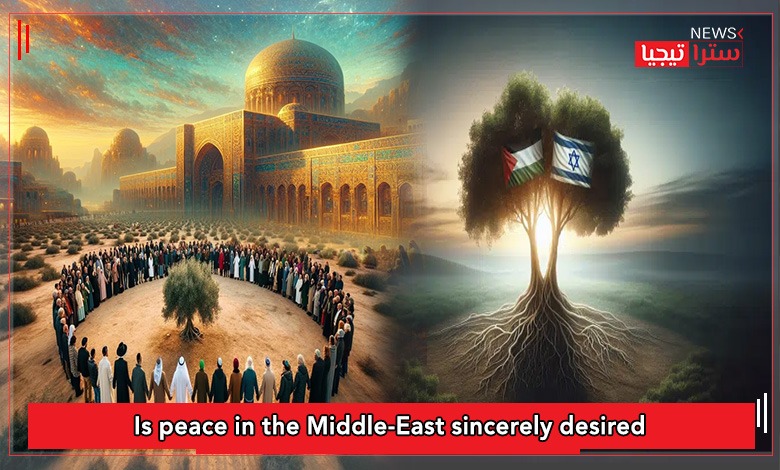By Vladimir Ilyich Lenin 11-10-2024
This quote seems very fitting for the historical period we are living through, especially in the Middle East. The question in the title is more rhetorical, with the answer being known to almost everyone who is well-informed.
Only a few days have passed since the commemoration of the Hamas terrorist attack on October 7, 2023, which resulted in the deaths of over 1,200 people and the kidnapping of around 250 Israeli citizens. These are the largest Israeli losses since the 1948 war.
From October 2023 to the present, Israel has killed more than 42,000 Palestinians in Gaza, destroyed the region’s infrastructure, and caused the exodus of almost 2 million people. Although they claim to have killed over 15,000 Hamas fighters and destroyed thousands of tunnels, the Israeli army has not yet managed to completely annihilate Hamas or eliminate its military force, despite inflicting significant losses. Insufficiently confirmed reports suggest that Israel has lost nearly 900 soldiers in the current conflict in Gaza.
In fact, I believe the current Israeli leadership would like to completely eliminate the Palestinians from Gaza as a first step toward further diminishing the possibility of creating a Palestinian state, while also taking control of hydrocarbon reserves in the continental area of the Mediterranean Sea.
Israel has continued its actions to eliminate the threat of attacks on its territory by executing decisive strikes on Lebanese Hezbollah, managing to eliminate the entire political-military leadership of the organization, including its leader of over 30 years (since February 1992), Hassan Nasrallah, through highly targeted bombings between September 27-30, 2024. Earlier, on September 17 and 18, 2024, pagers and other communication devices belonging to Hezbollah leadership members exploded, for which Israel did not officially claim responsibility. These operations are a significant success for Israeli intelligence services, once again demonstrating their ability to penetrate key levels of leadership among their enemies, including in Iran.
At the beginning of October 2024, Israel launched a ground operation in southern Lebanon, declaring limited objectives, which caused a massive exodus of the Lebanese population from the area, fleeing to Beirut and other parts of Lebanon, including Syria.
According to publicly available data, Israel has so far lost over 20 soldiers in these operations but has succeeded in destroying some of Hezbollah’s military targets, including a tunnel that crossed the Israel-Lebanon border slightly into Israeli territory.
The Israeli army drew the necessary conclusions from the 2006 conflict in southern Lebanon when it suffered significant losses in its fight with Hezbollah (over 120 soldiers, 20 tanks, and other equipment). The organization used the opportunity to create an open-air museum (The Resistance Museum in Mleeta, southern Lebanon), which is used not only for propaganda but also for recruiting new followers.
However, we cannot forget that in 1982, Israel’s troops reached Beirut, but this did not mean it could eliminate the threat from its northern border. As a result, the Israeli leadership should be more creative and find a solution other than a military one.
While military eliminating Hamas from Gaza may appear to be an almost completed objective, I believe that eliminating Hezbollah from Lebanon is an unrealistic goal, and the Israeli leadership certainly knows this, despite Prime Minister Netanyahu’s recent appeal to the Lebanese: “I tell you, Lebanese people, free your country from Hezbollah so this war can end.”
Hezbollah is deeply involved in Lebanon’s political and social life (it holds about 10% of the parliament seats, and this number would likely be higher if the confessional political system did not exist in Lebanon); along with the Amal movement, it is the main political force in southern Lebanon. Hezbollah has developed a social policy that has gained and continues to secure the support of a large portion of Lebanon’s Shia population. Iran’s financial support for Hezbollah, apart from military aid, is estimated at around 900 million dollars annually.
We are approaching the 100th anniversary of the creation of the state of Israel, a period during which we have witnessed various military conflicts in the Middle East, none of which have led to lasting peace in the region. Ending the Israeli-Palestinian conflict, one of the main causes of war in the area, can be achieved through the two-state solution, even though this option seems increasingly unfeasible in Israel, and despite all the difficulties in adopting this solution.
Is the normalization of relations between Saudi Arabia and Israel a step towards resolving the Israeli-Palestinian conflict? Very little to not likely at all; such hope is a misunderstanding of how things unfold in the Middle East and a disregard for history.
We are at a point where a possible escalation or war between Iran and Israel looms, with dangers not only for peace and stability in the Middle East but also with the potential to spread through its intersection with the war in Ukraine and other events that could be triggered by state and supranational forces towards a Third World War, which many authors believe has already begun.
Who wants peace? Most likely, many of those who do not hold political-military decision-making power. Why has peace not yet been achieved? The answers are many and complex; each of those who have a deep understanding of the region and international affairs can formulate their own opinions.

